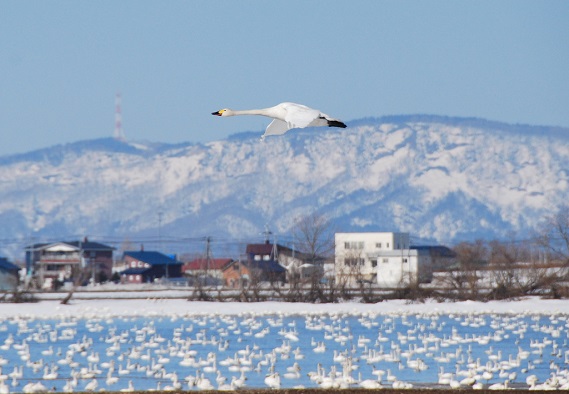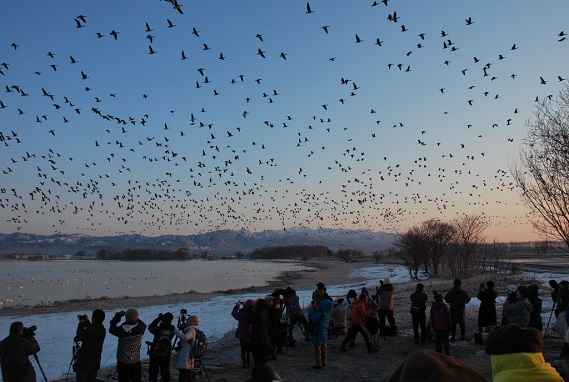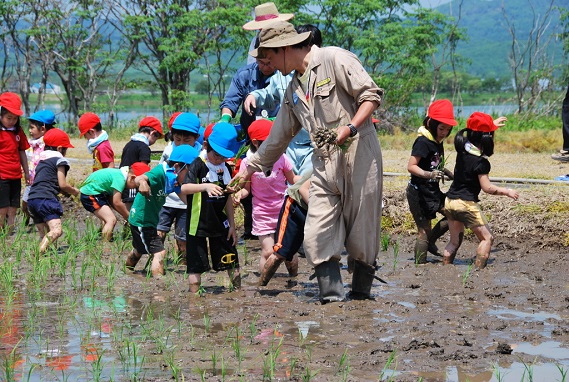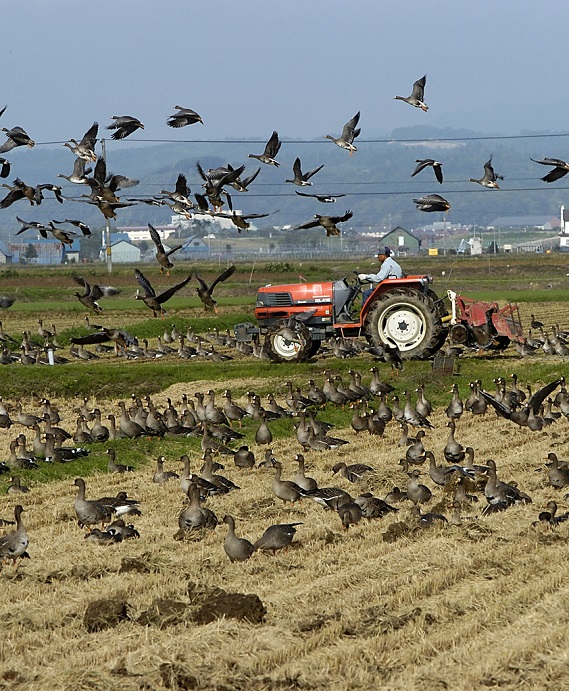News from Miyajuma-numa [EAAF055]
Katsumi Ushiyama, Miyajima-numa Waterbird and Wetland Center
Miyajima-numa is a small freshwater lake in central Hokkaido, northern Japan, which serves as an important stop-over for many swan, geese and duck species. The most numerous is the greater white-fronted goose and tundra swan, with around 75,000 and 10,000 birds, respectively. The lake is located 60km north of Sapporo, the largest city in Hokkaido, and many visitors come to enjoy the dynamic flight of tens of thousands of birds at very close range. The lake is also important as this is the only part left of the Ishikairi Marsh, which used to be the largest peatland in Japan before it got converted into land for agriculture.
Persecution of geese for the damage they cause to agriculture and rapid degradation of the wetland are the two main threats in Miyajima-numa. As rice is the main crop in this area, geese primarily feed on the remaining grains of rice after harvest. However, as the rice grains deplete after plowing and straw bailing in rice fields, they switch to feeding on wheat swards. Damage by geese may cause the wheat yield to decrease by 15-25% and geese are considered a serious pest by the farmers.

© Miyajima-numa Waterbird and Wetland Center (MWWC)
Miyajima-numa used to be a clear peat lake a century ago, but land use change and intensive agriculture nearby since the 1990s caused the lake to become highly eutrophic. The water surface has decreased from 33.6ha in 1947 to 25.1ha in 2007, and since sedimentation is proceeding by 1cm/year, the lake is expected to completely dry out in the next 40 years.
Miyajima-numa can be seen as a socio-ecological system where human activities impact wetland health and vice versa. It is important to understand the relationship between the wetland and the resident community, and measures incorporating the well-being of the community is the key to sustainable and proactive management. In order to tackle such problems, Miyajima-numa Waterbird and Wetland Center (MWWC) was established in 2007 and is managed by the Bibai City government. It conducts various activities on conservation, research, and CEPA with various partners. such as Miyajima-numa-no-kai (citizen’s group), Maga-Ranger (kid’s group) and Miyajima-numa Project Team (farmer’s group).
One unique attempt for wheat damage problems that provides mutual benefit for the farmers and the geese is growing cover crops in rice fields to lure geese away from wheat fields. For sedimentation, we are working to find ways to turn the phosphorus-rich sediment into organic fertilizer for the farmers. In collaboration with the farmers, we are also practicing Fuyumiizu-Tambo, or winter-flooding of paddies, as a tool to counteract the eutrophication and decrease in water level of the lake. Such paddy fields also serve as artificial wetlands and benefit many wetland species, but the most remarkable feature may be that they enable public participation of local farmers and citizens (by eating rice!) in the conservation of the site in a sustainable manner.
Many research is conducted in Miyajima-numa by university researchers and students and MWWC holds a meeting for researchers once a year, where they share and exchange information. Water bird monitoring is conducted by the MWWC, and from this year MWWC is coordinating a joint count of greater white-fronted geese within Hokkaido with the help of many bird and wetland-related groups and volunteers.
MWWC is also a member of the Hokkaido Ramsar Network (HRN). HRN is a network of wetland centers and related organizations in charge of managing wetlands in the field. HRN has recently published a book on wetland conservation and culture and held a joint symposium with the Japan Wetland Society. Regional networks like the HRN not only enhance the capacity building of individual Ramsar sites, but also raise awareness of conserving wetlands in the region as a whole.
To find out more about Flyway Site Network, please visit the FSN page.







